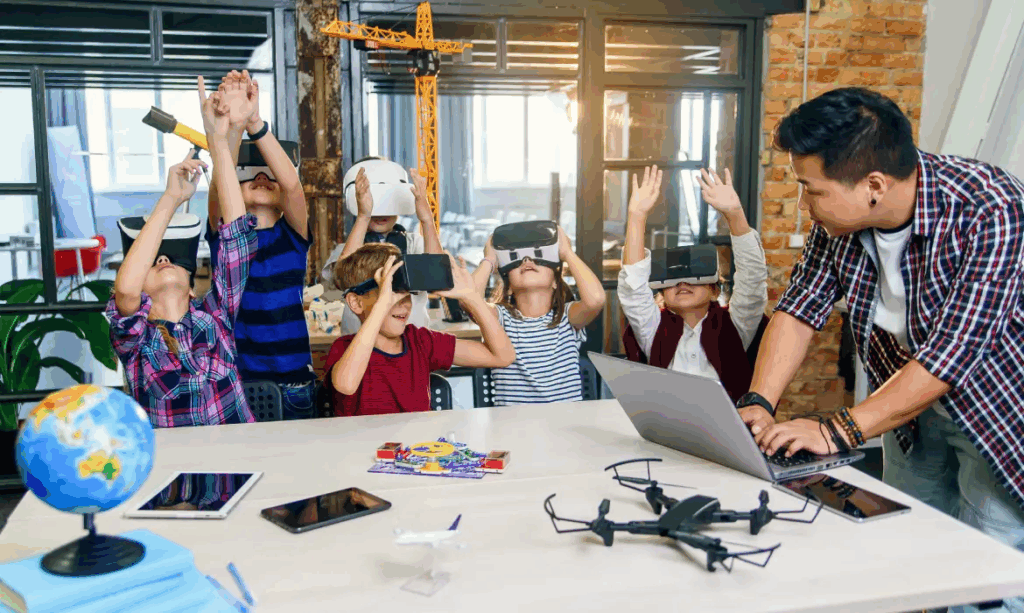Education has always evolved with society, from chalkboards to projectors to smart classrooms. In 2025, technology is playing an even greater role in shaping how teachers teach and how students learn. EdTech (Educational Technology) tools are no longer optional add-ons; they are becoming the backbone of modern classrooms. From interactive apps to AI tutors, these tools are revolutionizing the way education is delivered, making it more engaging, personalized, and accessible. This article explores the future of education by examining how EdTech tools are changing classrooms today.
The Rise of EdTech in Education
In the past decade, digital transformation has swept across nearly every industry, and education is no exception. The COVID-19 pandemic accelerated this shift by forcing schools to adopt online platforms for teaching. What began as an emergency solution has now become an integral part of the education system. Teachers are discovering that EdTech tools not only fill gaps but also open new opportunities to improve learning.

How EdTech Tools Are Transforming Classrooms
1. Personalized Learning with AI
AI-powered platforms analyze student performance and adjust lessons to fit individual needs. For instance, adaptive learning software can identify when a student struggles with a concept and provide additional exercises or explanations. This personalized approach ensures no student is left behind. A real-life example comes from a high school in California, where AI-driven math programs helped students improve test scores by 20% within a semester.
2. Interactive and Engaging Lessons
Traditional lectures often leave students passive, but EdTech tools bring lessons to life. Platforms like Nearpod and Kahoot allow teachers to create interactive quizzes, polls, and games that make learning more engaging. A teacher in Singapore reported that her students became more active participants when she introduced Kahoot into her classroom. Engagement increased, and students retained information longer.
3. Collaboration Beyond the Classroom
Collaboration is essential in today’s workplace, and EdTech tools teach students how to work together digitally. Tools like Google Workspace and Microsoft Teams allow students to collaborate on projects in real time, even if they are not physically together. For example, a group of university students in Nigeria successfully collaborated on a research project using Google Docs, despite being spread across three cities.
4. Virtual and Augmented Reality (VR/AR)
One of the most exciting developments in EdTech is the rise of immersive technologies. VR and AR make abstract concepts more tangible. For instance, medical students can use VR to simulate surgeries, while history classes can use AR to explore ancient civilizations. These experiences go beyond textbooks, offering students hands-on learning opportunities that were previously impossible.
5. Digital Classrooms and Remote Learning
While schools have returned to in-person learning, remote and hybrid classrooms remain part of the educational landscape. Platforms like Zoom, Microsoft Teams, and Google Classroom ensure that students can continue learning regardless of location. A case study from rural India showed that remote learning platforms helped children in remote villages access quality education that was previously out of reach.
6. Assessment and Feedback
Traditional exams are being replaced by continuous, technology-driven assessments. Tools like Quizizz and Edmodo allow teachers to evaluate students in real time, providing instant feedback. This approach reduces exam stress and gives teachers a clearer picture of student progress. In a middle school in Canada, teachers using Quizizz reported higher engagement and improved student performance compared to traditional testing.
7. Accessibility and Inclusivity
EdTech tools also ensure education is more inclusive. Screen readers, translation apps, and speech-to-text tools support students with disabilities or language barriers. For example, a student with visual impairments in the U.S. was able to participate in mainstream classes thanks to screen-reading software integrated into his digital learning platform. Inclusivity is one of the greatest promises of EdTech.
Case Study: Blended Learning in Action
At a university in the UK, professors adopted a blended learning model that combined face-to-face teaching with EdTech tools like Moodle and Zoom. Students had access to lecture recordings, interactive assignments, and online discussion forums. The result was increased flexibility and higher student satisfaction. Surveys revealed that 80% of students felt they learned more effectively with this blended approach compared to traditional methods alone.
The Benefits of EdTech in Classrooms
- Enhances student engagement through interactivity.
- Personalizes learning based on individual strengths and weaknesses.
- Prepares students for digital workplaces.
- Expands access to education in remote areas.
- Encourages collaboration and communication skills.
Challenges of EdTech Integration
Despite the benefits, challenges remain. Schools in underfunded regions may lack the infrastructure to adopt new technologies. Teachers may also face steep learning curves when transitioning to digital tools. Additionally, concerns about screen time, data privacy, and over-reliance on technology continue to be discussed.

The Future of Education with EdTech
Looking ahead, the future of classrooms will likely include even more AI integration, immersive VR experiences, and global collaboration opportunities. Students may attend virtual classes with peers worldwide, while AI mentors guide their individual learning journeys. However, the human element — teachers’ empathy, mentorship, and inspiration — will remain central. Technology can enhance education, but it cannot replace the relationships that make learning meaningful.
Conclusion
The future of education is being shaped by EdTech tools that make classrooms more interactive, personalized, and inclusive. From AI-driven learning platforms to VR experiences, these technologies are transforming how students engage with knowledge. While challenges exist, the opportunities far outweigh the drawbacks. By embracing EdTech responsibly, schools can prepare students for the demands of the 21st century and beyond.
References
- https://www.edutopia.org/article/technology-changing-classrooms
- https://edtechmagazine.com/k12/article/2024/01/future-education-trends
- https://www.educationcorner.com/edtech-in-schools
- https://www.timeshighereducation.com/student/advice/impact-edtech-education
- https://www.brookings.edu/research/edtech-future-of-education
- https://theconversation.com/how-technology-is-transforming-classrooms
- https://www.chronicle.com/article/tech-tools-classroom-success
- https://www.unesco.org/en/education/digital-learning
- https://forbes.com/sites/forbestechcouncil/2024/02/edtech-transforming-learning
- https://www.weforum.org/agenda/2024/03/future-of-education-edtech
Imran Ali is the founder of FreeSEOSmasher, with years of experience in digital education tools, website development, and online learning solutions. He is passionate about helping students, teachers, and parents discover reliable EdTech tools that make learning smarter and more accessible.